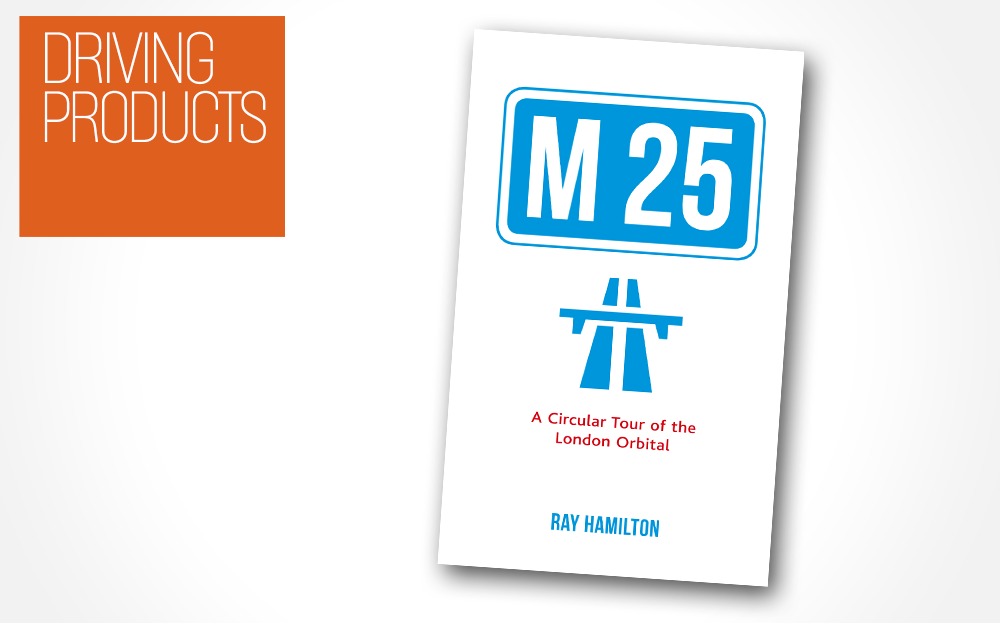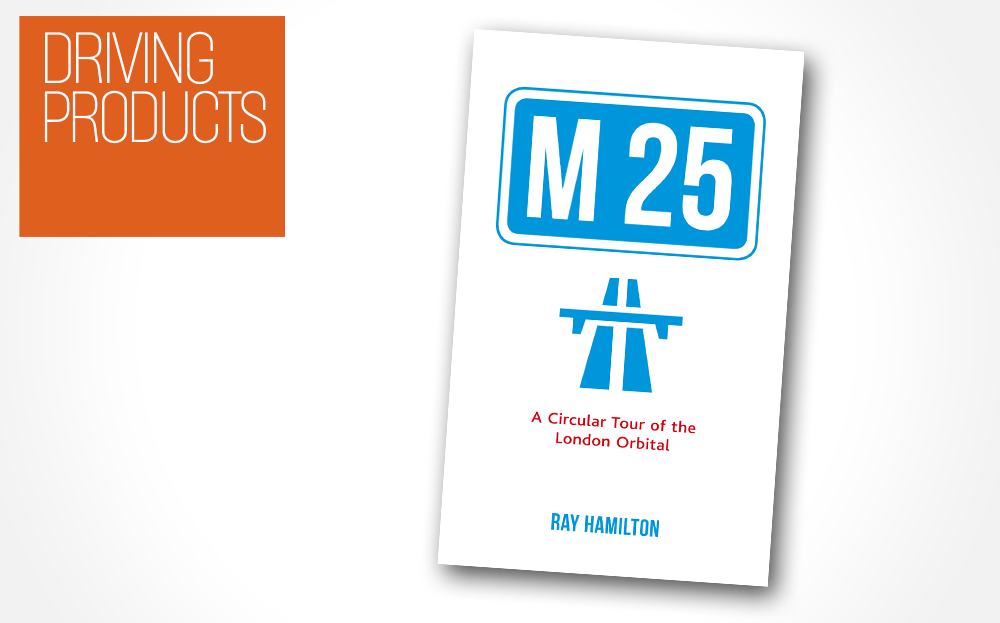Products: M25 A Circular Tour of the London Orbital, by Ray Hamilton
Why did the road to hell send Margaret Thatcher into a fit of rage?

- Rating: ★★★☆☆
- Price: £9.99 (£4.99 as Kindle edition)
- Buy at: Amazo.co.uk
LIKE TURNING onto a slip road to join Britain’s busiest ring road, you approach Ray Hamilton’s “biography of the M25” with a feeling of trepidation. Fingers are crossed, an alternative route is planned in your head (in my case, Renegade: The Lives and Tales of Mark E Smith) and a Thermos of tea is at your side.
Click to read car REVIEWS or search NEW or USED cars for sale on driving.co.uk
It’s tempting to imagine that any book that charts the history of Britain’s most notorious ring road will be mind-numbingly tedious, a bumper-to-bumper, chapter-by-chapter, stop-start journey that leaves you wondering about the 101 better ways you could be spending your time.
Fortunately, Hamilton charts not only the timeline and challenges of building an orbital route around London, but also the quirks and lighter moments in the motorway’s history, as well as a junction-by-junction guide to the surprising splendour that is but a flash of the indicator and twirl of the steering wheel away from the monotony of a traffic jam. One reason, perhaps, for keeping this book in the car’s glovebox and within reach at all times.
It goes without saying that the challenges of building the M25 were many. Few of us could imagine the workload of the poor souls who bore the responsibility for putting into action an idea that had been kicked around since 1937, when Charles Bressey, chief engineer for roads at the Ministry of Transport, and Edwin Lutyens, the well known architect and a consultant to Bressey, drew up their Highways Development Survey.
The Second World War scuppered their vision for a London orbital, but Hamilton says the proposed southern section as good as traces today’s M25. The Preston bypass opened in ’58, beating the M1 by a year to claim the title as Britain’s first motorway, and it wasn’t until 1975 that work began on the first section of the M25.
Vocal M25 supporter Horace Cutler, leader of the Greater London Council from ’77 to ’81, was doubtless shocked to learn that the route would rip through the grounds of his home
Bit by bit, junction by junction, the M25 took shape over the next 11 years. Nimbyism was at its height. Yet ironically, one of the most vocal supporters of the project found to his surprise that the motorway would pass through his back garden. Horace Cutler, leader of the Greater London Council from ’77 to ’81, was doubtless shocked to learn in ‘82 that the route for J16 to J17, between the M40 and Maple Cross, would rip through the grounds of his home in Gerrards Cross, Buckinghamshire.
The scale of the project was mind boggling with no less than 39 public enquiries, one of which dragged on for an astonishing 97 sitting days — considerably longer than the 49-mile tailback that counts as the M25’s worst traffic jam… to date.
The story of the “circular road to nowhere that ultimately, one way or another, leads to everywhere” also twists and turns through illegal street racers lapping the M25 at an average speed of 117mph, murders, weddings, variable speed limits, the loss of traffic police and rise of “traffic patrols”, big-brother control rooms with CCTV and the worrying increase in in-car distractions.
There’s a lot more to this picture-free compendium of the M25 than its compact size suggests, with chapters including the natural environment that the motorway has ploughed through, and the road’s impact on popular culture.
But what it misses are the voices of the people that were involved, one way or another, in the shaping of London’s orbital road. Perhaps that’s another, more detailed story that requires a more serious touch when it comes to bringing to life the road to hell.






